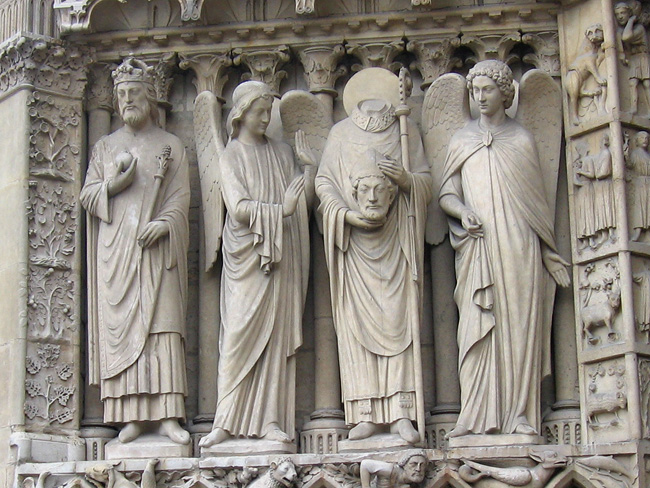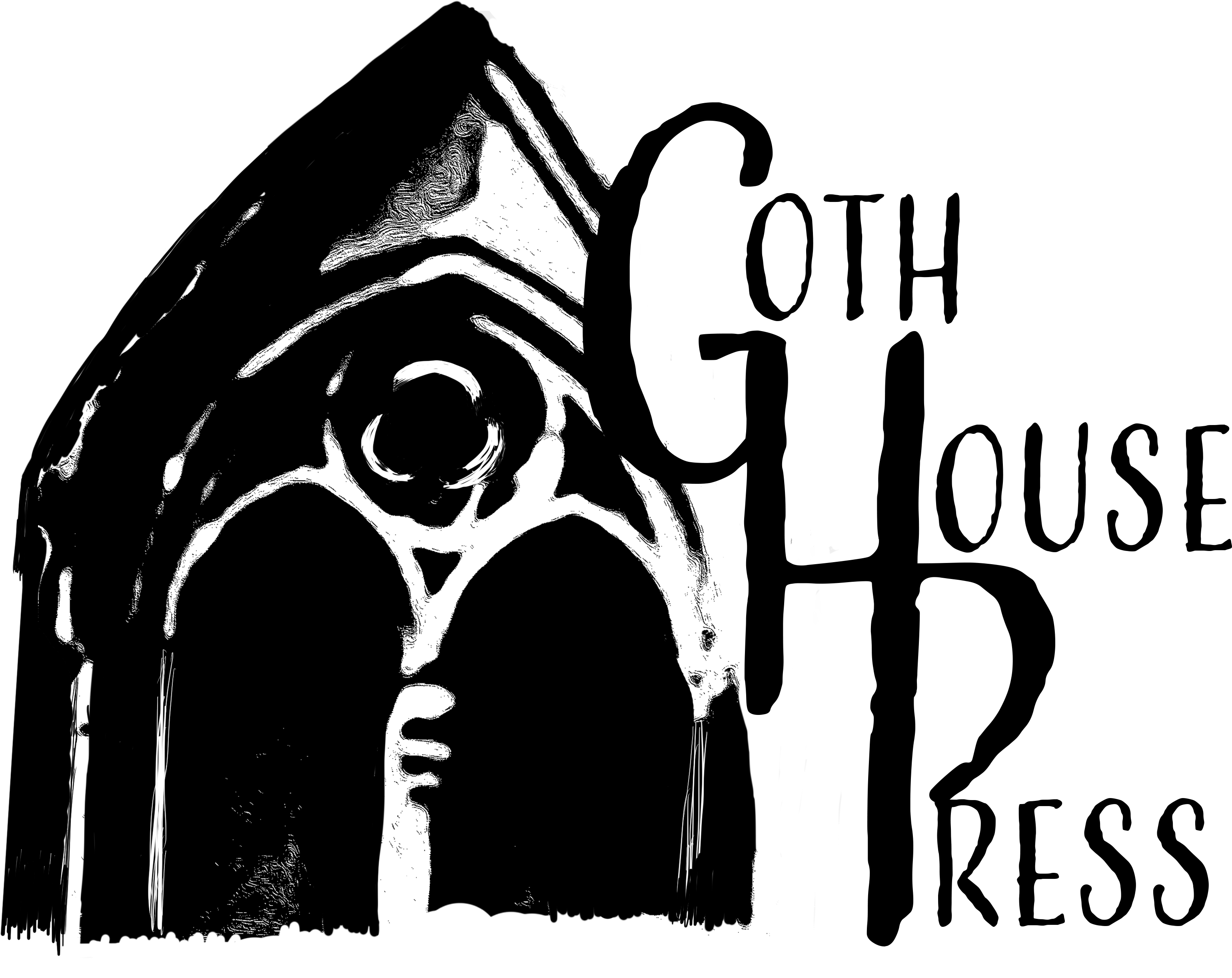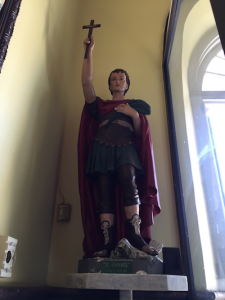During the Great Boxing Week Ice Storm of 1996 Paul and I flew to New Orleans for the first time. We spent a day crammed into SeaTac airport with thousands of other stranded travelers, as the airport gradually ran out of food, plane de-icer, civility, and hope. The airline promised us, again and again, that our prospective flight was “your best bet for getting outta here.” And, truthfully, even if we had gotten fed up enough to bag the trip and leave the airport, the entire Puget Sound region was covered in ice and without power, so where would we have gone?
So, we stuck around. Epic delay followed epic delay. When we finally got on the plane, more than 12 hours after our originally scheduled departure time, we were deposited in the Cincinnati Airport in the middle of the night with a can of pop, a pack of peanuts, and a ten minute phone card I never did figure out how to use. (Paul’s assessment: here’s a phone card. Call someone who cares.) We slept on our luggage and finally arrived in New Orleans a full day later than planned, having paid for a hotel room night we couldn’t use.
New Orleans in the last days of December was moderately warm (70s) and insanely humid. Cash and towels were perpetually damp to the touch. A dreamlike mist shrouded the high rise buildings of downtown as seen from the French Quarter, creating the illusion that they were two entirely separate worlds.
Our first act in New Orleans was to wander in a daze down Bourbon Street and allow a nice man to lure us into a restaurant we knew nothing about. Paul had a po-boy. I had crawfish. We sat on a balcony and marveled at the fact that we were there at all. The food tasted delicious. But Paul likes to point out that the end of December is not crawfish season.
We spent the next day driving around Cajun country, where we encountered charming little towns that weren’t on the map and people who spoke French as their first language. (You know the movie Beasts of the Southern Wild? We went to Montegut, where they filmed that.) We kept being surprised they took US currency.
On the way back into town, I started to feel a bit ill. We stopped at a Burger King, where, Paul tells me, I turned green. Food poisoning from delicious but out of season crawfish? Or an infection picked up from one of the many sad people trapped in SeaTac airport after Christmas? I’ll never know.
I spent the rest of the night languishing in our hotel room watching television. It was a profoundly surreal experience to see our own Bellingham street on CNN, as the National Guard removed five feet of snow from it. Mysteriously, CNN showed every house on the block except ours. Because it was unkempt? Because we weren’t there to sign release forms? Because this whole trip was a dream I was having while stuck at SeaTac airport?
Anyway, that was our first trip to New Orleans.
On the whole, I had a great time.
#
On that trip, we took a Voodoo and Cemeteries walking tour. (This was after I recovered from being green.) According to our tour guide, Voodoo as practiced in New Orleans is the result of enslaved West Africans given time off on Sundays ostensibly for worship of the Catholic God and saints. So, they carried on their own worship traditions under a veneer of Catholicism. In time, the traditions merged (syncretized) and took on a spiritual life of their own.
Our guide took us through Our Lady of Guadalupe, which is the oldest church building in New Orleans. It’s Catholic, of course, but it also has — according to our tour guide — the only genuine Voodoo saint in the US. He showed us the statue of “St. Expedite” (yes, his placard has the quotes) and told us the following story:
This Italian-made statue of a young Roman Centurion is from the 19th century. It was secular, intended for a Garden District mansion. But it was delivered to the cathedral by mistake. The French-speaking nuns opened it and, seeing that it was similar in size and style to the statues of saints in the Cathedral, they assumed it was a saint they were unfamiliar with and put him on display, using the name stamped on the outside of the crate: Expedite.
Some time later they discovered their mistake and tried to remove the statue, but after much public outcry, they put him back up again. See, the local Voodoos had already taken Saint Expedite to heart as the patron saint of getting things done in a hurry.
That’s the story — more or less, as memory serves. I accepted it with the usual grain of salt, snapped a few pictures and moved on.
A few years later I started daydreaming about going to New Orleans again and did a little online research, where I discovered that there were many who insisted that Expedite was a regular, actual saint, and that his veneration was common in the Caribbean and South America. I saw pictures of little plastic statues in roadside shrines that appeared to be the same design as the statue in New Orleans. I also checked out the official Catholic Church website, and found no mention of Expedite at all. So, there might be many who considered him a real saint — but not the Catholic Church, which is the arbiter of these things.
On a return trip to New Orleans in 2001, I think we failed to pay St. Expedite a visit, although I did stop at an occult shop and picked up a bunch of Voodoo-related literature. I learned that our original tour guide was more or less accurate about the syncretic origins of New Orleans Voodoo, although there was (unsurprisingly) a lot more to it. Such as: some of Voodoo’s “evil” reputation is probably related to its role in slave uprisings in the Caribbean.
In 2005 I was starting to daydream again about returning to New Orleans. Then Katrina happened. We finally went in April of 2006. The trip was amazing. With the city still raw and bleeding and half-empty, everyone we encountered — whether tourist or local — seemed to be someone who loved the city passionately. Everyone had a Katrina story. Everyonewanted to tell it.
By then, the Catholic Church website had a mention of Expedite, specifically to claim that 1. He was not a saint, no way, no how, and never had been. 2. The story about the nuns and the mis-delivered crate (which they described as happening in Paris, not New Orleans) was baloney. It had an obvious absurdity that I had never considered: they were NUNS. They knew LATIN. They would know full well what “expedite” meant. Sheesh.
And yet, I couldn’t help but notice that the Catholic site failed to explain — if he wasn’t a saint, and he wasn’t a mis-delivered bit of garden art — where did he come from?
In 2006 I took a closer look at the statue and realized something I should have noticed right off: he was not only the same size and style as the other statues of saints, he had tokens the way they did. Saints, like superheroes, have distinctive markers that identify them. In the case of saints, these markers are related to their stories, often to their martyrdom.
Saint Denis is depicted carrying his own head.

Saint Lucy is often depicted with her own eyeballs on a plate.

Saint Expedite is depicted carrying a cross in one hand and a bit of grass in the other, and stepping on a crow. The crow has a word balloon. It is saying “cras,” which is a pun. It means “tomorrow” and is also the Italian for what crows say.
The statue in New Orleans was obviously originally designed to be the statue of a saint, no matter what the Catholic Church had to say about it now. My Fortean sense was tingling. There was something truly special about this mysterious saint from nowhere, supposedly beloved of New Orleans Voodoos. So, I did what I often do when confronted by something mysterious and unbelievable: I chose to act as if I believed in it, just to see what would happen. I gave him a little offering and asked for “something good.” Yes, I really was that vague, although simmering under the surface was my concern for the city I loved and its recovery, and concern for my writing and my “day job” careers, both of which had seemed stalled out since 2001.
We returned to Bellingham. That year, I was on the alternates list for the Clarion West writers workshop. As the months until June went by, I didn’t have much hope of attending. But I did joke that with my luck, I would get a call the week before the workshop started.
I didn’t. I got a call the day before. Saturday, the day before the workshop started. Just like today. Imagine me, ten years ago, getting a call that someone had dropped out of the workshop at the last minute, and the space was mine if I wanted it.
I took a few hours to think about it, but that was just a ritual. In my heart I had already said yes.
Yes, I will completely change my life for the next six weeks, and maybe forever, and I will do it RIGHT NOW.
A couple of months later, when the workshop was over, I dropped by a web development company that I hoped would be a new freelancing client. Instead, I got a job offer. And could I start right away? Like, this afternoon?
Of course I said yes. What else was I going to say?
At Orycon in November, I was recounting highlights of the year to a friend I hadn’t seen since the last Orycon. It wasn’t until then that I made the connection between things I wanted being offered to me, on the contingency that I accept them RIGHT NOW, and having earlier asked for a blessing from the mysterious entity known as Saint Expedite.
Instantly, I turned superstitious. I became convinced that I had to properly express my appreciation, and I had a feeling that the proper way to express it was by making a return trip to New Orleans. I was nervous about bringing this up to Paul — we have a limited travel budget, and I wasn’t sure how he’d respond to me wanting to go back to the same place so soon.
It turned out, he already wanted to go back and was wondering how to bring it up with me. So that worked out all right.


1 Comment
Comments are closed.